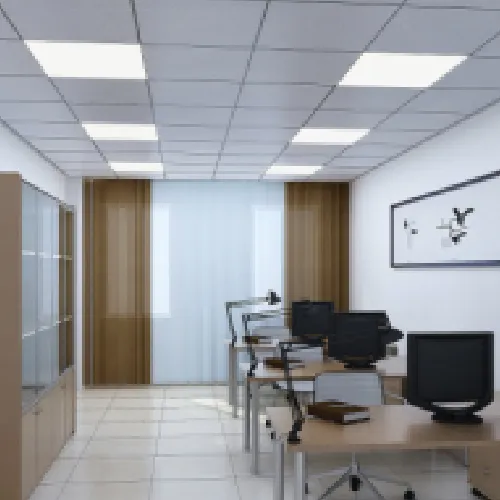- Afrikaans
- Albanian
- Amharic
- Arabic
- Armenian
- Azerbaijani
- Basque
- Belarusian
- Bengali
- Bosnian
- Bulgarian
- Catalan
- Cebuano
- Corsican
- Croatian
- Czech
- Danish
- Dutch
- English
- Esperanto
- Estonian
- French
- German
- Greek
- Hindi
- Indonesian
- irish
- Italian
- Japanese
- Korean
- Lao
- Malay
- Myanmar
- Norwegian
- Norwegian
- Polish
- Portuguese
- Romanian
- Russian
- Serbian
- Spanish
- Swedish
- Thai
- Turkish
- Ukrainian
- Uzbek
- Vietnamese
Ноя . 25, 2024 09:04 Back to list
Understanding Drywall Suspension Ceiling Techniques for Modern Interior Design Solutions
Drywall Suspension Ceilings A Comprehensive Overview
A drywall suspension ceiling, also known as a dropped ceiling or false ceiling, is a popular design feature in both residential and commercial spaces. It is a secondary ceiling that is hung below the main structural ceiling, creating a space where lighting fixtures, air conditioning ducts, and other utilities can be concealed. This article will explore the benefits, installation process, design options, and maintenance considerations associated with drywall suspension ceilings.
Benefits of Drywall Suspension Ceilings
1. Aesthetic Appeal Drywall suspension ceilings can dramatically enhance the visual appeal of a room. They provide a clean, smooth surface that can be painted or finished in various textures, allowing for customization that complements the overall design scheme of a space.
2. Concealment of Utilities One of the primary advantages of a suspended ceiling is its ability to hide unsightly plumbing, wiring, and ductwork. This not only improves the look of a room but also allows for easy access to these systems for maintenance purposes.
3. Acoustic Enhancement The gap created between the original ceiling and the suspension ceiling can also improve soundproofing. This is especially beneficial in commercial environments such as offices or theaters, where controlling noise levels is crucial.
4. Energy Efficiency By having a lower ceiling height, a suspension ceiling can help improve energy efficiency. This is particularly noticeable in larger spaces where heating and cooling demands can be significantly reduced.
5. Flexibility and Adaptability Drywall suspension ceilings are versatile and can be easily modified. Whether it's adding new lighting fixtures, adjusting HVAC systems, or creating new sections, the suspended ceiling allows for a high degree of adaptability.
Installation Process
Installing a drywall suspension ceiling requires careful planning and execution. Here are the main steps involved in the process
drywall suspension ceiling

1. Planning and Measurement First, the space must be measured accurately, and a plan developed for the layout of the ceiling. This includes determining the height of the dropped ceiling, the arrangement of lights, and the incorporation of any HVAC systems.
2. Gathering Materials The materials required include drywall sheets, metal framing components, insulation, and any additional features like lighting fixtures. It's crucial to ensure that all materials meet local building codes and regulations.
3. Framing Setup Install the metal framing system to create a grid that will support the drywall. The grid must be securely attached to the existing ceiling, ensuring it is level and stable.
4. Drywall Installation Cut the drywall sheets to fit the grid and attach them using screws. Seams between drywall sheets should be properly taped and mudded to create a seamless appearance.
5. Finishing Touches Once the drywall is in place, the ceiling can be sanded, primed, and painted according to the desired design aesthetic. Additional features such as lighting can be installed at this stage.
Design Options
Drywall suspension ceilings offer countless design possibilities. They can be completely flat for a modern look or feature trays and recesses for added depth and character. Additionally, archways and curved designs can be implemented to create unique visual effects. Lighting can be integrated into the design, with options ranging from recessed lighting to decorative fixtures, enhancing both functionality and style.
Maintenance Considerations
While drywall suspension ceilings are relatively low-maintenance, occasional cleaning and inspection may be necessary. Dust and debris can accumulate in the gap between the two ceilings, so it’s advisable to periodically check and clean to promote hygiene.
In summary, drywall suspension ceilings are an excellent solution for those looking to enhance their space with style, functionality, and efficiency. With their myriad benefits, flexible design options, and straightforward installation process, they remain a popular choice among homeowners and builders alike. Proper planning and maintenance can ensure that a drywall suspension ceiling serves not just as an aesthetic feature, but as a functional component that improves the overall environment of a space.
-
PVC Laminated Gypsum Ceiling Board OverviewNewsApr.11,2025
-
Mineral Fiber Ceiling Tiles Price Analysis and ComparisonsNewsApr.11,2025
-
Crafts of Mineral Fiber Ceiling Tile ManufacturingNewsApr.11,2025
-
Difference Between Gypsum and PVC CeilingNewsApr.11,2025
-
An Overview of Mineral Fiber Ceiling TilesNewsApr.11,2025
-
Advantages of PVC Gypsum CeilingNewsApr.08,2025







